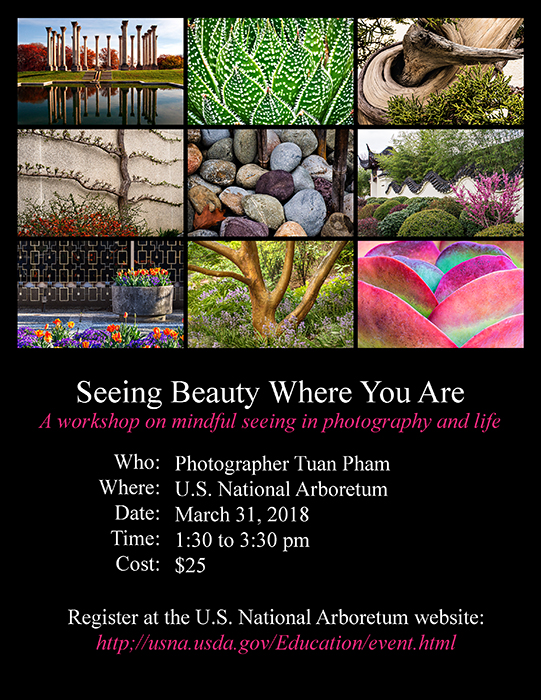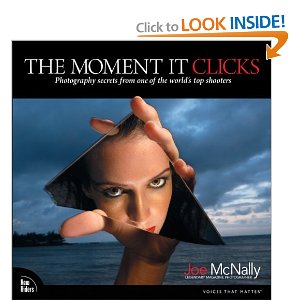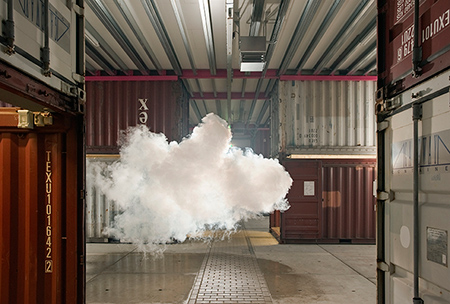-
Eye-1 sees the familiar forms and labels, the things that everyone sees
-
Eye-2 takes time to look past appearances for subtleties, interdependence, inner connection, and the “what else?”
-
Eye-3 roams in and out of consciousness, between inner and outer landscapes, for different perspectives. Looks beyond the status quo
-
Eye-4 sees with complete presence, openness, and receptivity through the lens of “emptiness.”
Category: Reference
-

Seeing Beauty Where You Are
My friend Tuan Pham will be presenting some new material at the National Arboretum in March.Generally, people breathe without knowing that they are breathing. An unconscious act that keeps us alive. Many see in a similar fashion -mindlessly- without recognizing they are seeing. Over time inattentive blindness sets in; the joy of seeing goes out the window. Seeing happens without thought; a rose is a rose is a rose.Mindful seeing wakes up the sensory organs. It reengages that sense of innocence, creating opportunities for endless transformative changes. Changes to the way we create art… and live life.Tuan’s latest presentation is a synthesis of teachings on “insightful observation.” Drawing from works by masters in art, science and mysticism. Tuan combines this with his personal experiences in nature photography and mindfulness practice. He illustrates a common-sense approach to creating space for beauty to appear. To allow the child-artist within to come out and play.This will help you to differentiate the four levels of seeing, or “Four Eyes.”Tuan has chosen photographs for the presentation that he took locally. He demonstrates that one need not travel long distances, climb tall mountains, or wake up before dawn to find beauty. There is beauty where ever you are.Join Tuan at the US National Arboretum on Saturday, 31 March from 1:30 to 3:30pm. The cost is a mere $25, and you must register in advance.His presentations are deep, beyond the technical, where the artist inside you lies. -
Darkroom Equivalents
For all of you who never knew the wonders of a B&W darkroom, here is a video about the darkroom equivalents of some common Photoshop tools.
This week is Photoshop’s 25th anniversary and Lynda.com has produced a free video demonstrating some wet darkroom techniques that are commonly used in Photoshop’s digital darkroom. It is great to see the dodging and burning techniques that were so common in the wet darkroom demonstrated by a master printer like Konrad Eek as he works his magic to produce a fine art print.
Nearly every tool in Photoshop has its roots in the wet darkroom and I love the comparison of the contact print to Bridge (or the Library module in Lightroom). Even the Unsharp Mask, which I have frequently heard attributed to Adobe making up names (thanks to Beyond Monochrome for the excellent resource) was invented, and named, in the wet darkroom.
Seeing the work that was involved in the wet darkroom is such a great reminder of the simplicity of performing effectively the same action in Photoshop. Konrad has it right when he talks about the time and effort involved in retaining the information to create the same print a second time. The notes and masks all had to be filed and managed, when Photoshop (and Lightroom) allow us to save all of that work within the file (or catalog) so the second print is the press of a button.
I personally never had much of an opportunity to work in the wet darkroom, however the few times I did, I remember being able to watch the print develop before my eyes. And although I appreciate the speed and efficiency of the digital darkroom, there is something magical about the wet darkroom.
I feel a little bit of pity for today’s photographers who will never know the joy of seeing the image appear from that blank white sheet of paper. As if it was always there, just waiting to be, if you’ll pardon the pun, “exposed.”
-
The Beauty of Things
My good friend Tuan Pham will be conducting a workshop and presentation at the National Arboretum in Washington DC in early 2014. His presentation, “Beauty of Things Insubstantial, Insignificant and Untouchable” represents his Buddhist approach to photography and life in general. His workshop is called “In Search of Artistic Personality” and will meet five consecutive Saturdays.
 Beauty of Things Insubstantial, Insignificant and Untouchable
Beauty of Things Insubstantial, Insignificant and UntouchableTuan’s Buddhist background has helped him develop a contemplative approach toward photography, mixing meditation and Wise Attention to see the beauty in things that others are willing to walk past. This approach makes Tuan’s photography simple and compelling. Tuan will share his methods for training your eyes and cultivating your mind to perceive your surroundings in an unbiased way; freeing you to create memorable images with a much deeper meaning. Tuan is a life-long practitioner of mindful meditation and applies those principles to his photography. The National Arboretum is one of Tuan’s favorite sites for nature photography, please join him for this unique opportunity to learn from one of our areas most accomplished amateur photographers.
Date:
8 February, 2014
Time:
10:00 am to 12:00 pm
Location:
United States National Arboretum
3501 New York Avenue, NE; Washington, D. C. 20002-1958
Tel: 202-245-2726 Fax: 202-245-4575
In Search of Artistic Personality
The workshop that Tuan will be leading will meet at the arboretum during the spring. As of today, the workshop is still unscheduled. Stay tuned for additional information.
Tuan’s teaching style is such that anyone with a camera, be it a DSLR, Point and Shoot or camera phone will be able to take advantage of his workshop.
-
Self-Publishing Artist Books w/ Lauren Henkin
Photoworks is hosting an innovative and artistic workshop with Master Photographer Lauren Henkin on Saturday, September 21 — from 10 AM – 4 PM. The workshop is titled SELF-PUBLISHING ARTIST BOOKS, and is the perfect introduction for photographers who are interested in preserving or sharing or marketing their images.
Self-Publishing Artist Books with Master Photographer Lauren Henkin
DATE: Saturday, September 21 TIME: 10am - 4pm (includes 1 hour lunch) COST: $225 (includes a comprehensive resource manual) REGISTRATION LINK: Self-Publishing Artist Books QUESTIONS? Contact Lauren Henkin at lauren AT laurenhenkin DOT com
 Book publishing for photographers has exploded over the last few years. Expanded options for printing have enabled artists to consider publishing their own works, through both traditional and handmade processes. There is now a level playing field between established photographers and amateurs and emerging artists, enabling anyone to craft their work specifically for a book. While most of the focus on self-publishing has centered on available print-on-demand services, creating books produced directly by the artist offers an even wider array of control, options, and methods, making it an attractive option to expand the artist’s storytelling capabilities. For example, when self-publishing, the artist can take a more active role in choosing the paper, layout, method of binding, and even work with other artists within the bookmaking community. By viewing sample books and case studies and hearing in-depth descriptions of the steps required to complete a book project, participants of this 1-day introductory seminar will leave with the inspiration and resources to begin their project. All of the following material will be presented as general topics, but also within the context of Henkin’s own experiences in self-publishing.
Book publishing for photographers has exploded over the last few years. Expanded options for printing have enabled artists to consider publishing their own works, through both traditional and handmade processes. There is now a level playing field between established photographers and amateurs and emerging artists, enabling anyone to craft their work specifically for a book. While most of the focus on self-publishing has centered on available print-on-demand services, creating books produced directly by the artist offers an even wider array of control, options, and methods, making it an attractive option to expand the artist’s storytelling capabilities. For example, when self-publishing, the artist can take a more active role in choosing the paper, layout, method of binding, and even work with other artists within the bookmaking community. By viewing sample books and case studies and hearing in-depth descriptions of the steps required to complete a book project, participants of this 1-day introductory seminar will leave with the inspiration and resources to begin their project. All of the following material will be presented as general topics, but also within the context of Henkin’s own experiences in self-publishing.Topics covered will include:
- Why self publish?
- Advantages and challenges of self publishing
- Types of Publications
- Determining specifications for your project
- Collaborating with other artists
- Financing your book
- Marketing and distribution
- Case Studies: How others are doing it
- Resources to complete your project
-
Simply Beautiful Photographs: A National Geographic Traveler Seminar
NatGeo Traveler is doing a full-day photography seminar titled “Simply Beautiful Photograhs” at National Geographic Society on October 6th.
Simply Beautiful Photographs
Your photographs can be artistic creations and you’ll learn the secrets to making the most appealing photographs possible. Renowned photographers Annie Griffiths and Dan Westergren take you on a visual journey and share their perspectives on what creates beauty in a photograph. They’ll cover how to use color, light, composition, and—most important—how to see your subjects with a different eye.
Dates & Locations
October 6, 2013 9:00AM - 4:00PM National Geographic Society • Washington DC
Cost: $195
Register here: http://www.nationalgeographic.com/ngtseminars/seminars/simply-beautiful-photographs.html
Topics Covered
Composition and Light
Explore two of the most basic elements needed to create any beautiful image. You’ll see the importance of defining your subjects; incorporating shapes, colors, and textures; and using lighting techniques to vary and influence a photo.
Vision and Voice
How do you choose the content for your images? Learn how to express something personal through your images and create your own artistic voice. Great subject matter often comes from seeing something that others don’t within a familiar setting and then capturing it in your photo.
The Power of Moment
Great photographs convey information, ideas, and emotion. Learn how to sharpen your skill for finding and capturing decisive moments that will reflect what’s truly special about the places, people, and experiences you witness.
Learning to See
Train your eyes to look for photos that tell a story. Discover the visual, intellectual, and intuitive elements that go into making stunning photographs. Explore how travel photography styles have changed and what makes certain photos leave a lasting impression.
The Art of Taking Pictures
Color is the most significant element in composition. It commands the viewer’s eye and influences the feel of a picture. Discover how to work with color, contrasts, and balance, so you can make the most aesthetically appealing images possible.
Still have questions? Check out our Frequently Asked Questions page or email: info AT ngtravelerseminars DOT com
-
Dean Collins on Digital Imaging
Dean Collins was early into adopting the digital revolution. I’m not certain that he gave up his 8×10 view camera and leaf shutters, but his predictions about the future of digital were pretty much spot on.
In this video he again preaches about the need to control specular, diffuse and shadow regions of the photograph. He recognized that even in digital photography, capturing the best possible image would make post processing more enjoyable and effective.
He predicted that there would be a huge market in digital manipulation and photo composites, something that he was working on even then, in 1998. Definitely way ahead of his time.
I look back on these Dean Collins videos and find that they are still applicable to the photographs I make today. I spend a good deal of time attempting to control contrast, specular highlights and shadow detail. I employ a number of techniques that I initially learned from his videos, such as strobes/flashes, scrims and reflectors. Dean’s videos explain the use and purpose of these techniques in simple, easy to understand terms.
If you are just trying to get into the glamor, advertising or product photography industries you can do yourself a great service by getting a copy of The Best of Dean Collins on Lighting videos. Dean demonstrates many light modifiers, natural, studio and location lighting. He also demonstrates some novel techniques such as moving a background rather than photographing something in motion and firing studio strobes multiple times during an extended exposure to get sufficient light at a small aperture.
For another take on “the Dean of Photography’s” ability to teach lighting like no one else, take a look at the Strobist’s review of the videos.
-

The Movement of Light
Ramesh Raskar presented a TED Talk about femto photography, or photography at a trillion frames per second. Inspired by Harold Edgerton, the MIT professor who, in 1964, stopped a bullet as it passed through an apple using stop-motion photography, Ramesh decided to build a camera that could photograph light itself. Ramesh’s camera is revolutionary in the same way that Edgerton’s photograph was, he is able to photograph a world that we have never seen before.
I don’t expect to able to go out and buy one of Ramesh’s cameras any time soon, but the possibilities are truly extraordinary.
Ramesh Raskar: Imaging at a Trillion Frames per Second
-
Lighting in Layers
David Hobby produced a series of DVDs called Lighting in Layers that explains how to use small battery powered speed lights to produce amazing lighting effects. The videos show subtle lighting and dramatic lighting, with and without modifiers. There is lots of discussion on how shutter speed and aperture can be used to mix ambient light and speedlites.
The videos are well worth the cost if you are interested in learning the art of off-camera flash.
-

Making it All Look Easy
I’m frequently amazed by the way some photographers can make such a difficult shot appear to be simple. When I first saw this behind the scenes video of Joe McNally getting the environmental portrait of a guy changing a light bulb on the top of the TV antenna at the top of the Empire State Building, I thought it was such a simple idea. It all looks easy but took three attempts on different days and a really novel idea from Joe on how to get the camera above the light. Plus he is WAY up on top of one of the tallest structures in the world. The picture was for a story that Joe was working on for National Geographic called the Power of Light.
-

Creative Ideas
Are you inspired right now, or are you craving that intravenous injection of inspiration that drives you to the next level?
A few weeks ago as I was perusing some blogs, I stumbled across an article about Berndnaut Smilde and knew I was viewing something special. Berndnaut took a simple physical phenomena and envisioned a surrealistic environment where the inside was the outside. The very idea of creating a cloud inside a building was simply fantastic. But to use that technique to create other worldly photographs was the crazy kind of idea that demonstrates Berndnaut’s genius.
Feeling inspired by the images that I was seeing, I found a video where he discusses making the clouds. The technique is simple, but requires maintaining some pretty specific cooling and moisture requirements that are not realistic to create in just any room of your house.
So what is it that inspires you?

You must be logged in to post a comment.